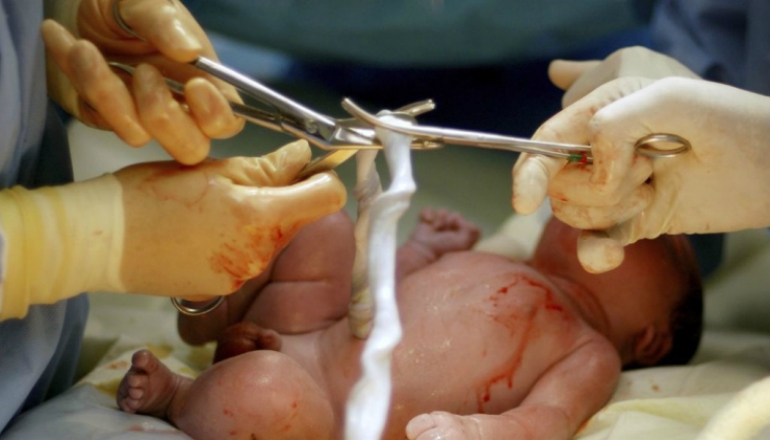
After birth, the mother must expel the placenta, which has carried oxygen and nutrients to the fetus during pregnancy. This process is known as the third stage of labour. In the 1960s, midwives and obstetricians began actively managing the third stage. This involves giving women an injection of Syntocinon (synthetic oxytocin) with the birth of the baby, clamping and cutting the cord and pulling the placenta out using controlled cord traction
Delayed cord clamping means waiting 2 to 3 minutes after the delivery of an infant before clamping and cutting the umbilical cord. During this time, blood continues to pulse from the placenta to the baby until the pulses naturally stop around 3 minutes. The transfer of blood from the placenta to the baby is most effective if the baby is placed on the mother’s abdomen or lower.
A growing number of parents are choosing delayed cord clamping for their baby – some even believe in not severing the cord at all (known as lotus birth). Parents who wish to delay or avoid cord clamping should plan with their clinical care providers prior to the birth. In the absence of any rare conditions or accidents at birth, parents have the right to consent to or refuse surgical intervention in a normal birth.
Generally, benefits of delayed cord clamping are better understood in the preterm infant population. They include improved systemic blood pressure, increased cerebral oxygen, reduced need for blood transfusions, and lower risk of hemorrhage.
Delayed cord clamping in full-term infants has been associated with an increase in red blood cells, higher hemoglobin levels, and decreased likelihood of iron deficiency at three to six months.
There are both immediate and long-term infant benefits for delayed cord clamping, including:
- Increased blood volume
- Decreased necessity for blood transfusions
- Increased hematocrit and hemoglobin
- Preemies benefit from delaying cord clamping by as little as 30-45 seconds
- Decreased need for surfactant use and mechanical ventilation in premature and low birthweight babies
- Decreased incidence of intracranial hemorrhage, necrotizing enterocolitis and late-onset sepsis
- Increased blood pressure, cerebral oxygenation and red blood cell flow in premature and low birthweight babies
- Delayed cord clamping has been linked to a newborn weighing slightly more at birth
- Decreased incidence iron deficiency anemia in term babies.
- A mother is holding her newborn baby.
- 538 views













